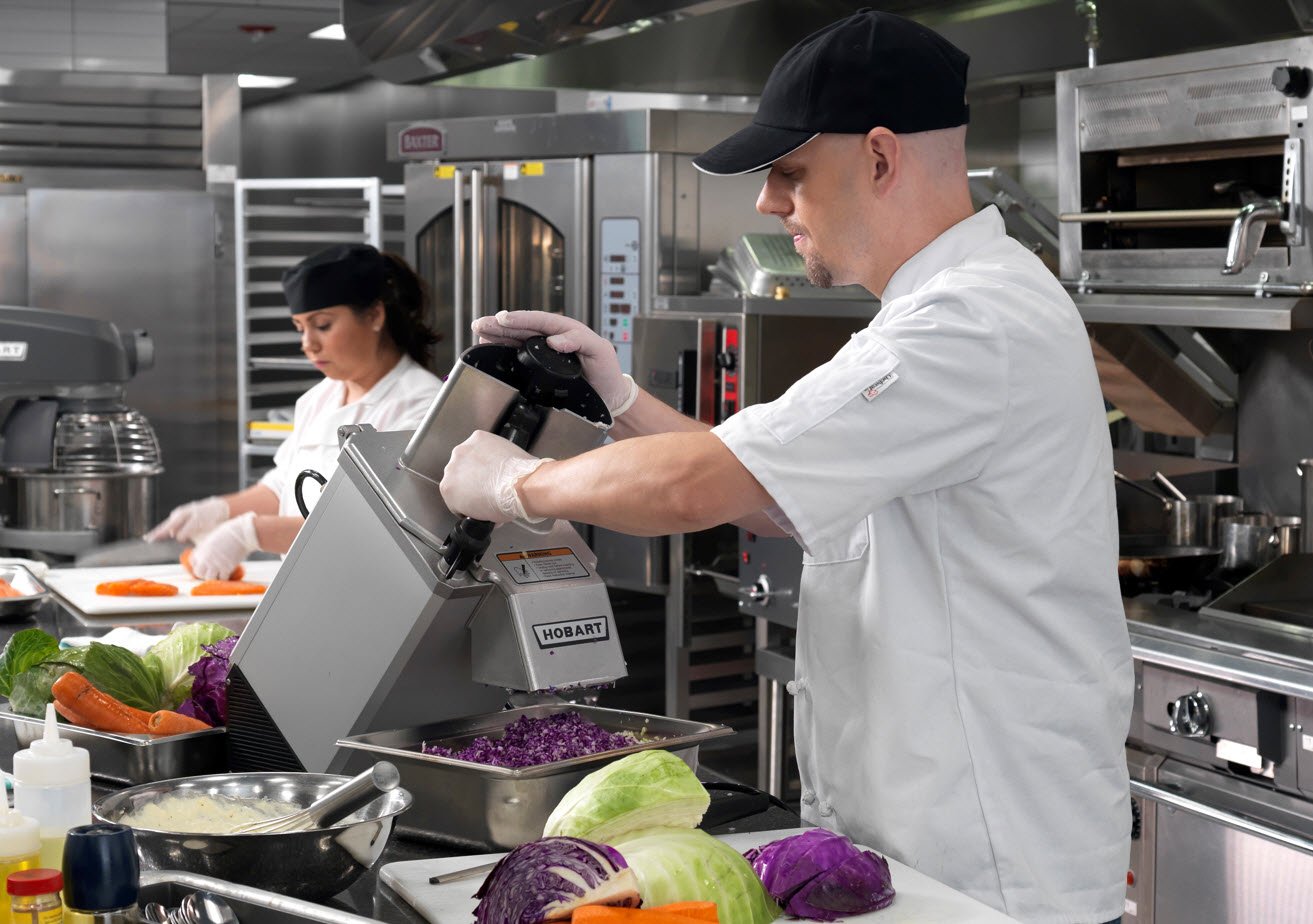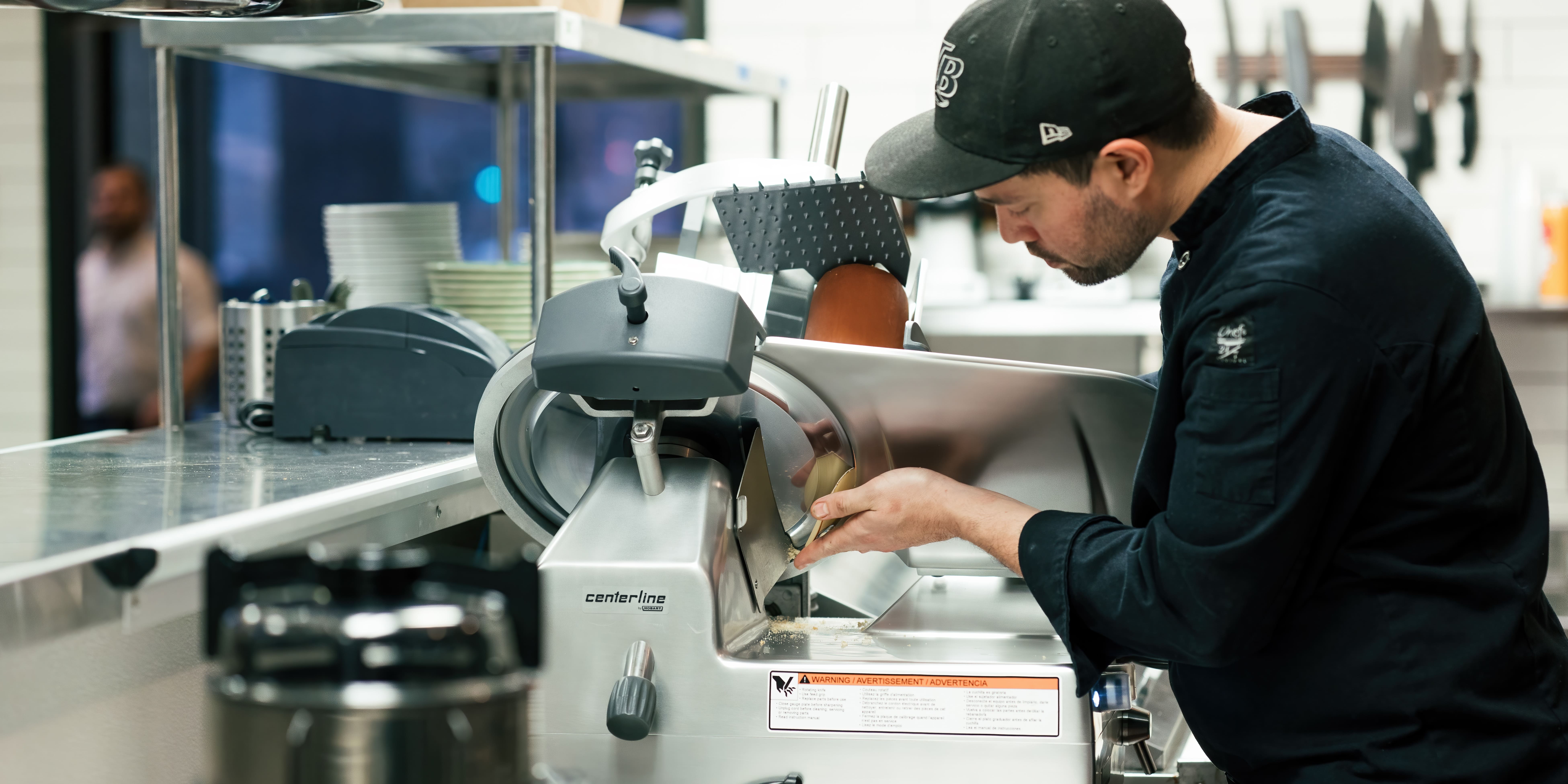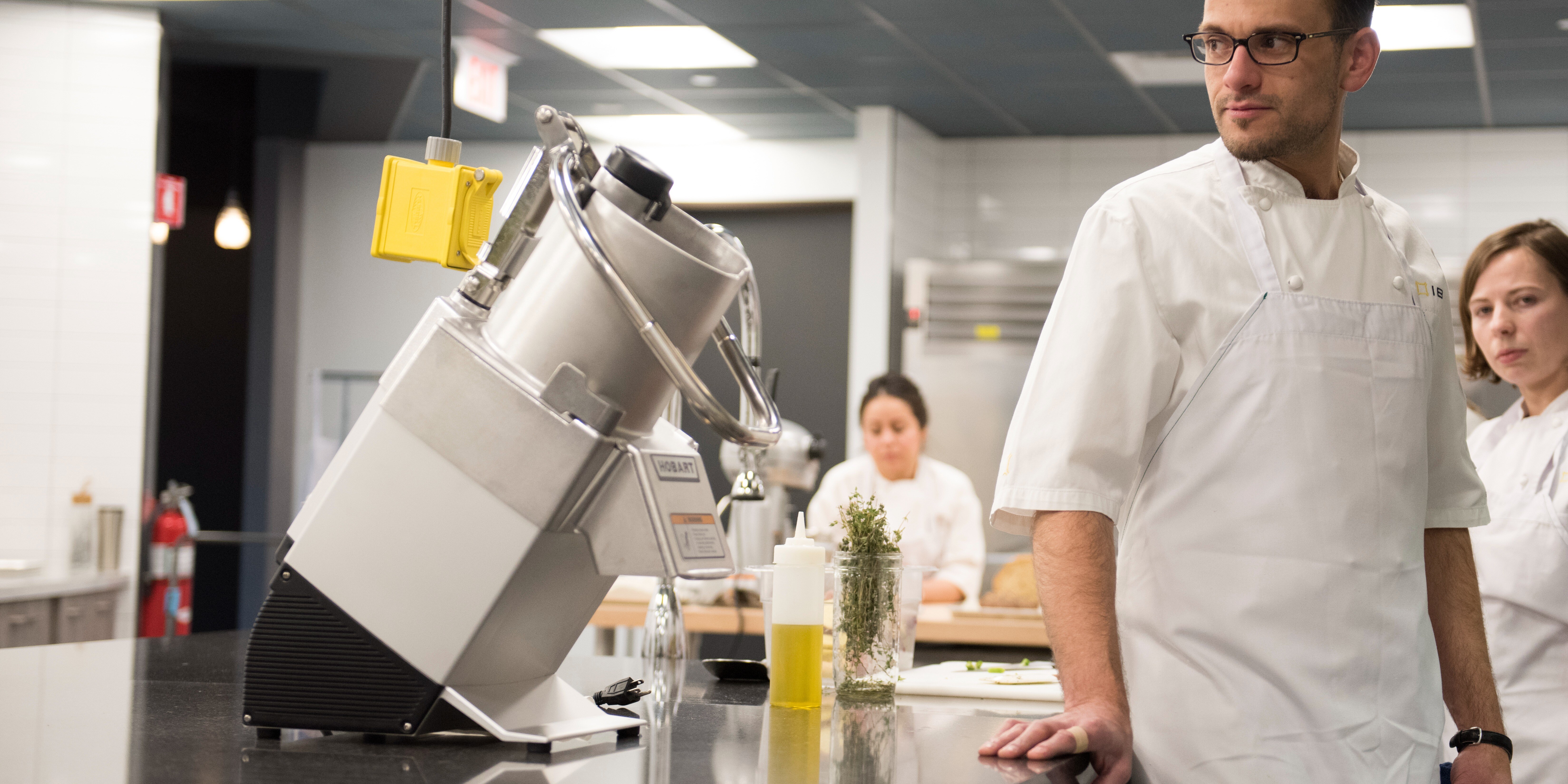Food processors have become more popular pieces of equipment in K-12 kitchens, with some schools citing they utilize them for more than 50% of their chopping, dicing and grating needs. This places the equipment second in use only to convention ovens.
Regardless of the size of the school and its kitchens — from smaller independent districts to larger ones with management-run programs — there are still similarities in the challenges they face with equipment and labor. Nutritional requirements have also shifted and so have students’ expectations.Many students have an increased interest in fresh fruits and vegetables and plant-based meal options. Healthy grab-and-go choices are important, too, given the time restraints of lunch hours. Because of this, K-12 staff often need to change their approach to menu planning and recipe development to incorporate fresh, from-scratch meals and snacks.
Continuous feed food processors can be an important part of making those changes. However, with consistent and qualified labor being recognized as one of the biggest challenges in K-12 kitchens, it is critical that staff receives proper training to use this equipment. Following some important tips for food processing can help improve quality, help the product last longer and reduce waste.
1. Always wear gloves and use the pusher component. As added operator assurance, wear mesh or cut-proof gloves (with rubber gloves over top) when operating or disassembling the food processor for cleaning. When processing ingredients, use the pusher component to feed product through.
2. Rinse fruits and vegetables. Prior to loading the food processor, be sure to thoroughly clean all products with water.
3. Choose the correct blade for the desired cut. There are a variety of cutting tools for continuous feed food processors, including:
- Slicer: slices firm and soft products, including root vegetables, peppers, bananas and mushrooms. Also shreds lettuce and cabbage.
- Crimping slicer: ripple slices cucumbers and carrots.
- Soft slicer: slices soft products like tomatoes.
- Julienne cutter: juliennes potatoes, carrots and cucumbers.
- Grater: grates carrots, hard cheese and nuts.
- Shredder: shreds carrots, cabbage and cheese.
4. Load the food processor correctly. A food processor blade turns clockwise as it operates. When loading product into the hopper, load it in the opposite direction. Loading product counter-clockwise allows the blade to immediately hit the product as the blade spins for an even cut. To slice tomatoes or green pepper, place the product bottom down and stagger them in the hopper.
5. Clean and sanitize thoroughly. Turn the food processor off and unplug it before disassembling it for cleaning. Clean after each use to avoid potential cross contamination. Dismantle all removable parts and wash with a mild detergent and warm water in a three-compartment sink. Wipe down the exterior of the food processor with a damp cloth. Note that any aluminum parts should not be placed in a ware washer or in excessively hot water.
6. Keep the food processor unplugged when not in use. This helps augment operator assurance, even with the convenience features built into the equipment.
Offering fresh, from-scratch foods in K-12 kitchens provides students with a variety of nutritional options for their daily meals. Salad bars featuring both vegetables and fruits are a popular means to support this initiative, particularly for middle and high schools. Having the right food processor and staff trained to use it properly can help make quick work out of providing these fresh options.
This article is one of a three-part series providing tips on food prep equipment to K-12 kitchens. The other two articles focus on mixers and slicers.
About the Author
 Megan Gray is the product line manager for Hobart – Food Preparation Products. She has been with Hobart since 2017 and specializes in Hobart meat room, specialty and food processing equipment. See all her blogs here.
Megan Gray is the product line manager for Hobart – Food Preparation Products. She has been with Hobart since 2017 and specializes in Hobart meat room, specialty and food processing equipment. See all her blogs here.





-min.jpg)





